Conservation treatment is not always black and white, even if it is the colors of the object. In fact, there is often a lot of gray area for the preservation of cultural heritage works. This was the case for a recent conservation treatment of Untitled Mobile, 1958, by Alexander Calder performed by Christina L. Simms, Conservator of Objects and Sculpture, of McKay Lodge Conservation Laboratory. The mobile was shipped to the conservation center from a private collection.
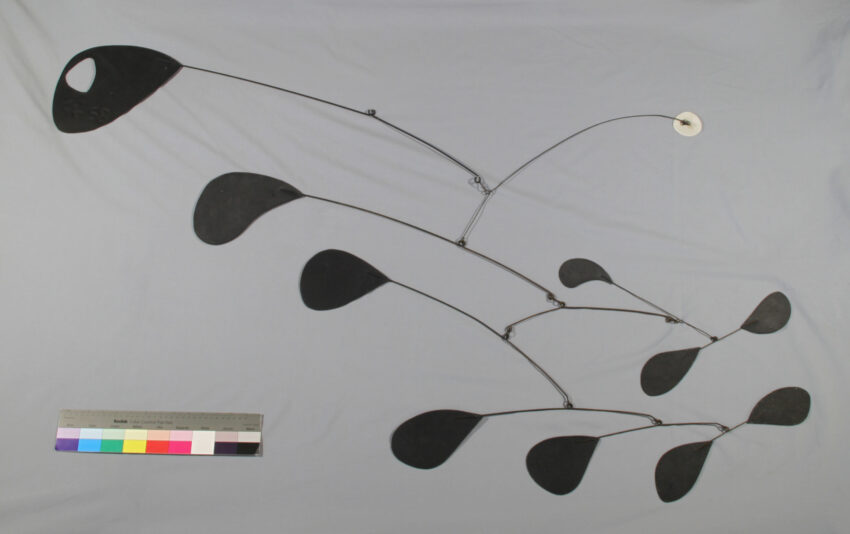
The object is a mobile sculpture by the late artist Alexander Calder. Calder is a world-renowned American artist who is best known for his monumental public sculptures and mobiles. The artwork, Untitled Mobile, 1958 features eleven aluminum paddles connected by steel wires, which serve to suspend the components in mid-air when the sculpture is installed. The suspended components then respond to air currents, creating a sense of movement for an otherwise static object.
Calder’s works range greatly in size. For example, another mobile treated by Conservator Simms at the Pittsburgh International Airport, spans nearly two floors.
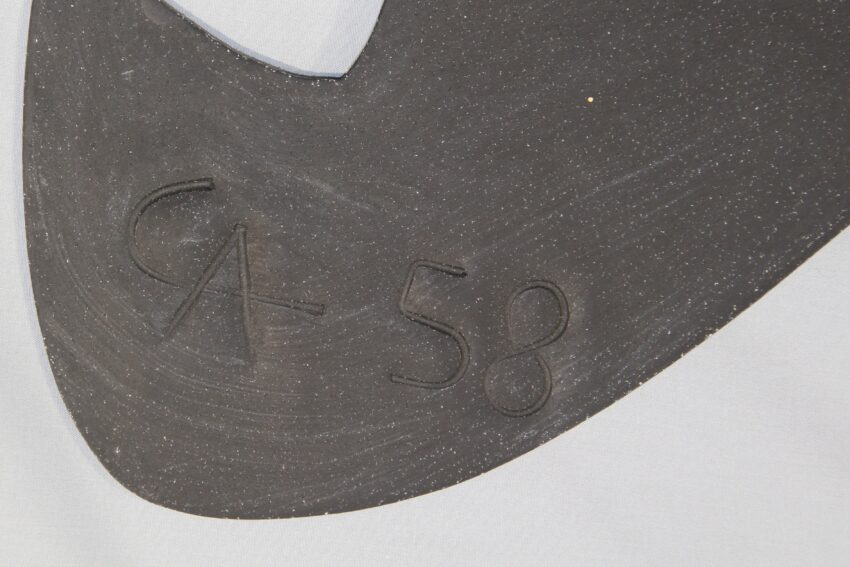
Only one paddle of the eleven paddles is painted white in color, and it is round in shape. All remaining paddles are painted black and their shapes are reminiscent of teardrops. The large uppermost black paddle with an irregular cutout has the artist’s signature and date inscribed; it reads: “CA 58”.
The sculpture was last treated in the late 1980s, and since that time had developed several condition issues which are often typical of painted metal sculptures. There was active corrosion on the “hangers” or wires. The painting coating on the paddles had small friable white accretions which were likely the beginning of uniform aluminum corrosion. Connection points are also missing paint due to physical contact between the wires, a condition issue typical for an installed Calder mobile.
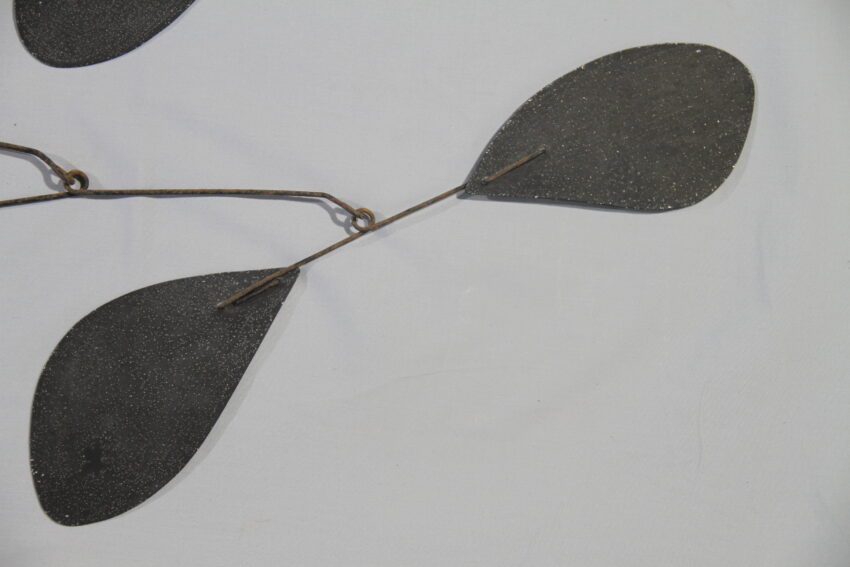
This is where the conservation treatment of the black and white Calder mobile, turns gray. Before any conservation treatment of the Calder mobile began, Simms created a “brush-stroke” diagram to map the surface artifacts of the coating. While the corrosion had compromised the coating on the wires, cleaning tests were performed on the paddles. Cleaning tests with strong polar and aromatic solvents failed to produce an acceptable surface.
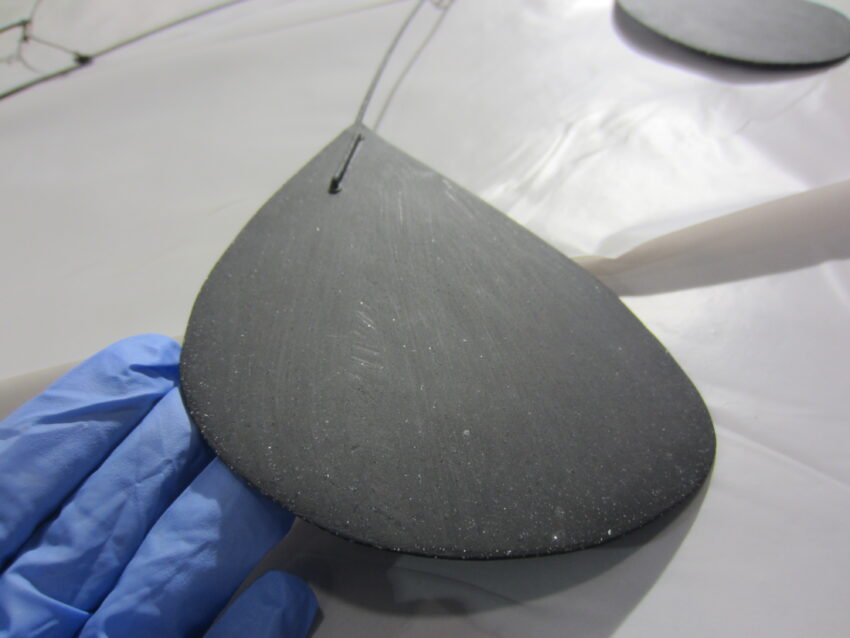
At the same time, Conservator Simms performed research regarding coatings used by the late artist Alexander Calder, similar treatments, and the object’s treatment history. The object was documented to be “reconditioned and repainted” nearly thirty years ago. This was consistent with a visual inspection as the top-coat did not appear as a sixty year old or artist-applied coating.
Spot treatment of the corrosion and isolating the existing paint layer then overcoating with new paint were strongly considered, but given the extent of the corrosion, this type of treatment would prematurely fail. The current coating was also noted to be a relatively recent restoration layer. With this in mind, a full removal of the corrosion and recoating was considered the option best for the object.
While the extant paint layer is not documented as the original, all efforts were made to ensure that the new coating did not visually drift from the before treatment appearance, operating under the assumption that the previous restoration was true to the artist’s color and gloss.
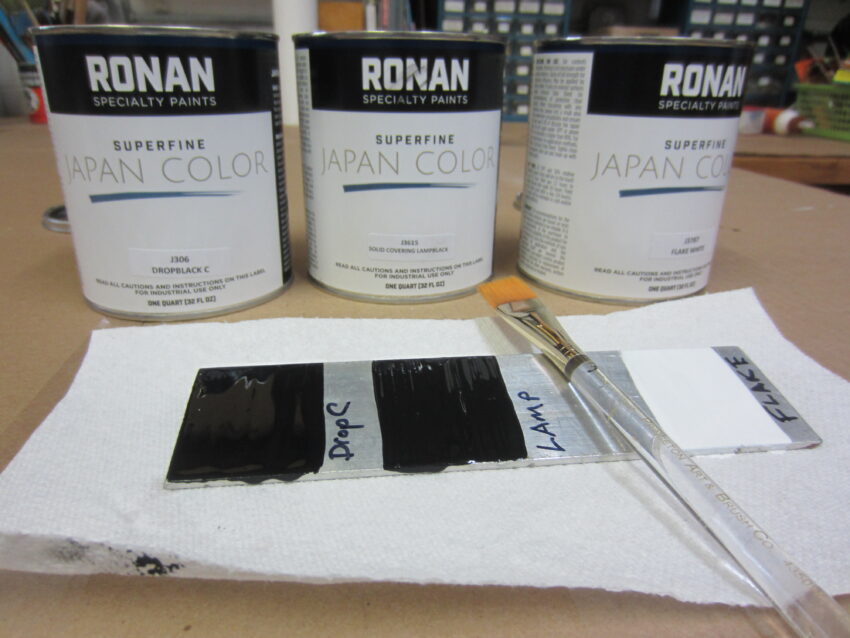
Research was also conducted for the best possible and most historically appropriate coating system for the Calder mobile. Ronan Specialty Paints Superfine Japan Colors were ultimately selected since it is well-known that Alexander Calder used this brand of paint and it has the matte finish characteristic of Calder’s painted works. Before treatment, several colors were selected then painted onto an aluminum reference substrates for comparison; the color and gloss levels were evaluated with the current coating before a final selection was made.
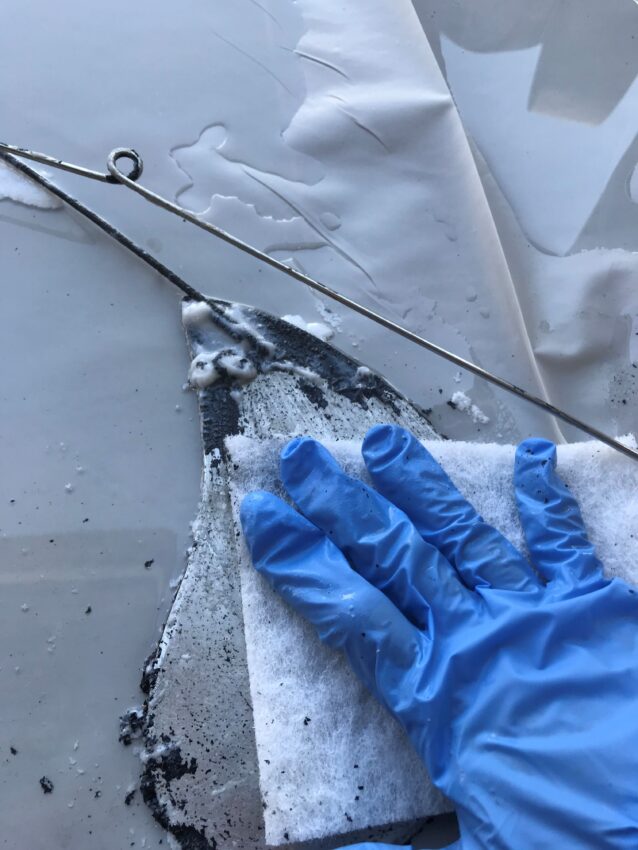
The existing coating was then chemically removed using a biodegradable, pH neutral paint stripper, then carefully cleared with water and solvent to remove residues. Corrosion was removed with conditioning pads, abrasive paper, and a scalpel as needed then cleared with solvent.
For recoating, a corrosion inhibiting primer recommended by the manufacturer was applied. Color top-coats were applied with a brush as would have been the original method of the artist.
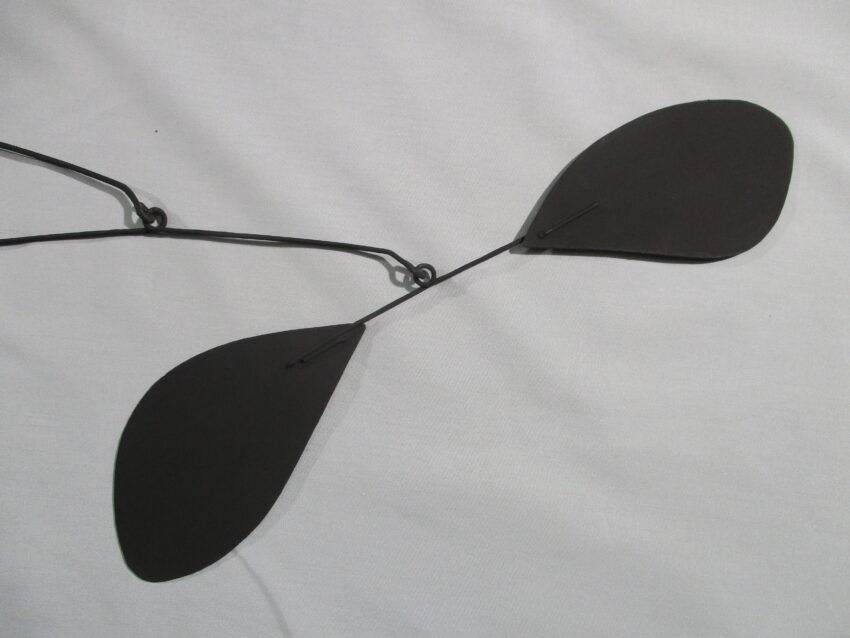
The matte paint by Ronan Specialty Paints, like most matte paints, does require special handling and care since it readily burnishes. For safe transport, each paddle and connection point was wrapped with an conservation-grade Tyvek® and closed with cotton twill tape. Canned compressed air was also recommended for maintenance cleaning versus traditional dusting methods and materials.
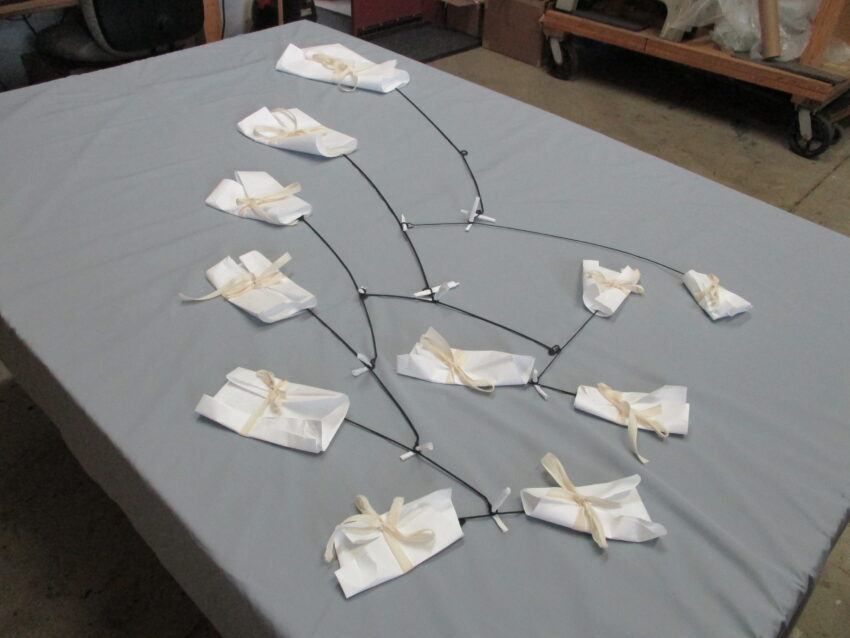
After the conservation treatment of the Calder mobile, the painted surfaces appear in the previous color and gloss level used by the artist Alexander Calder. The object is stable, and once again, in plain black and white.
